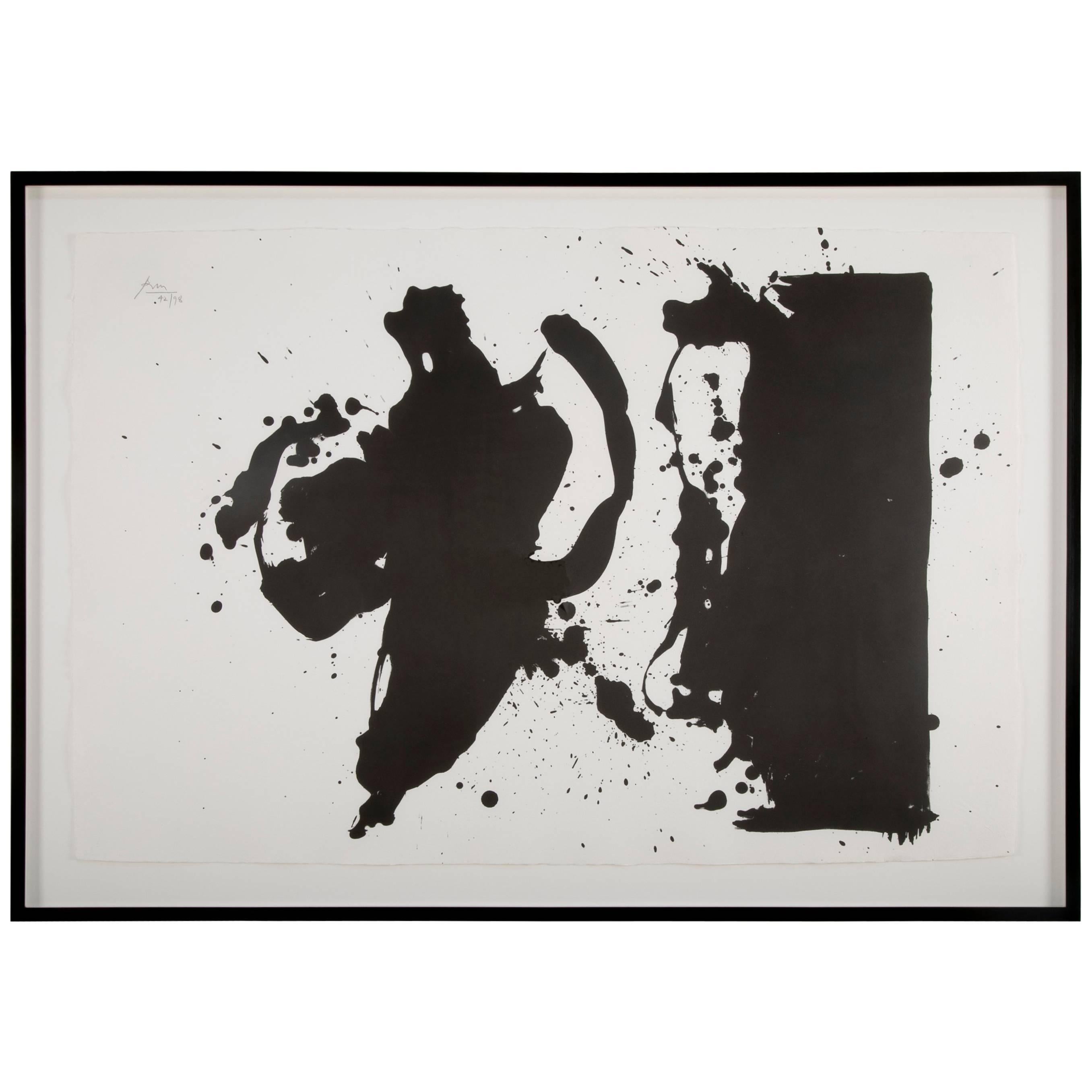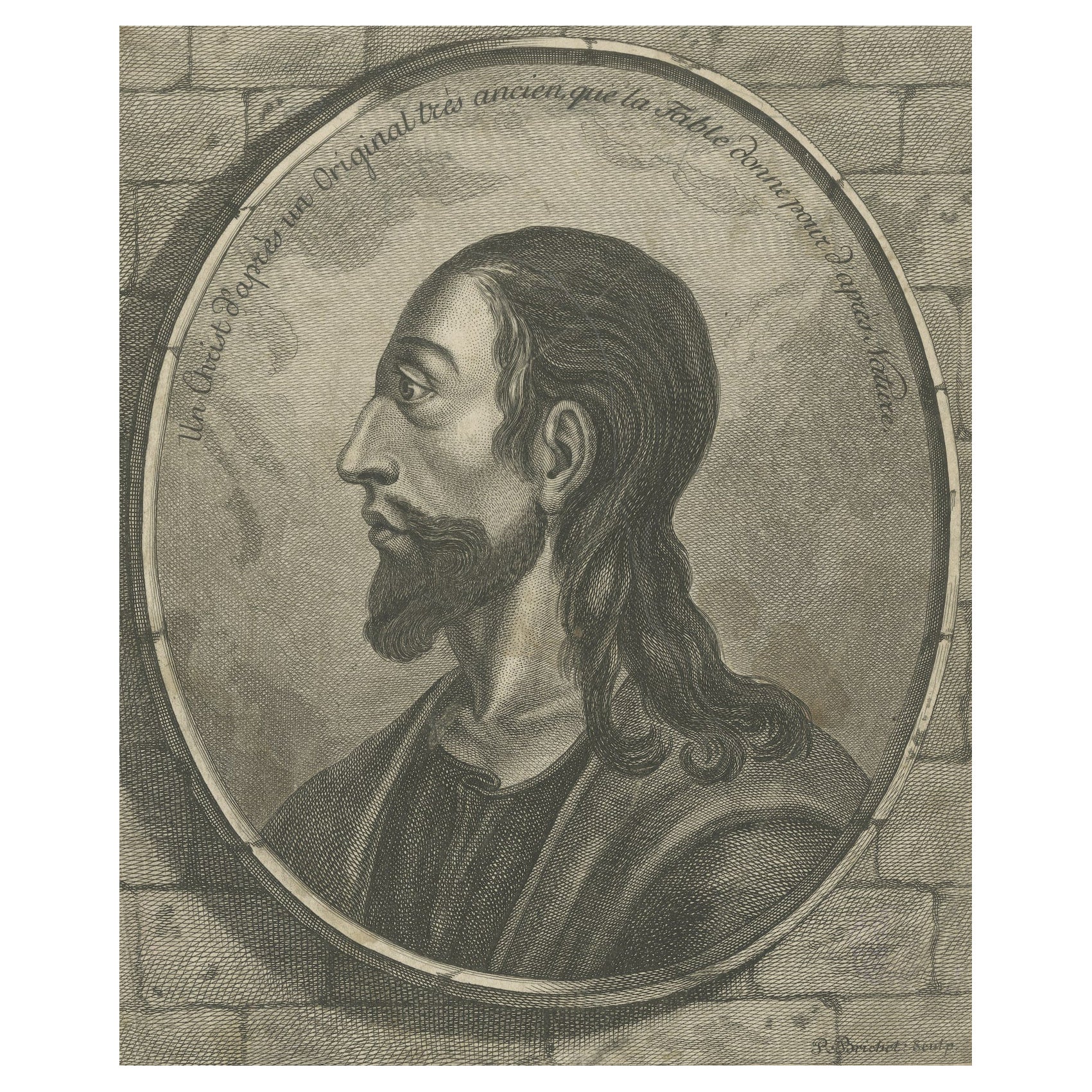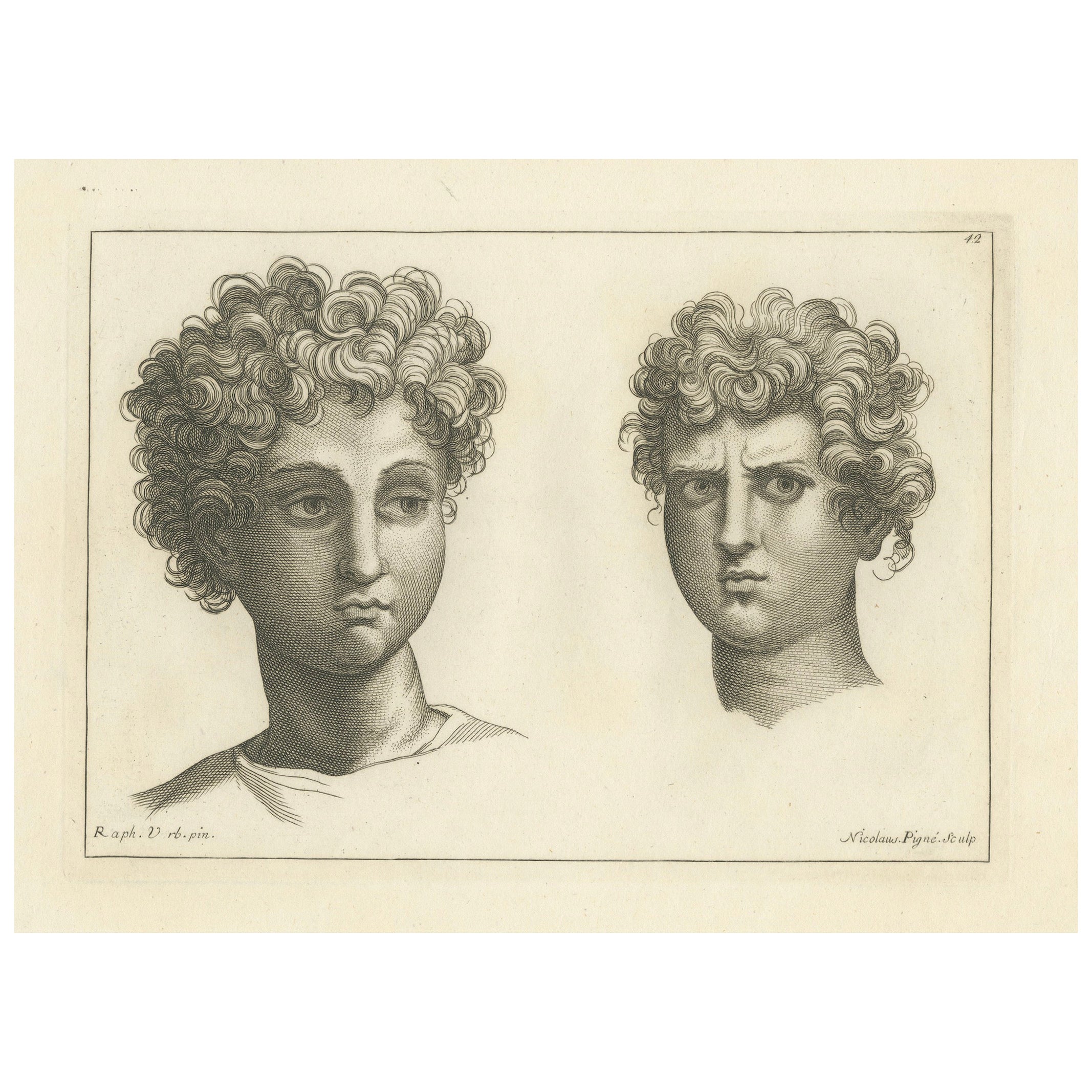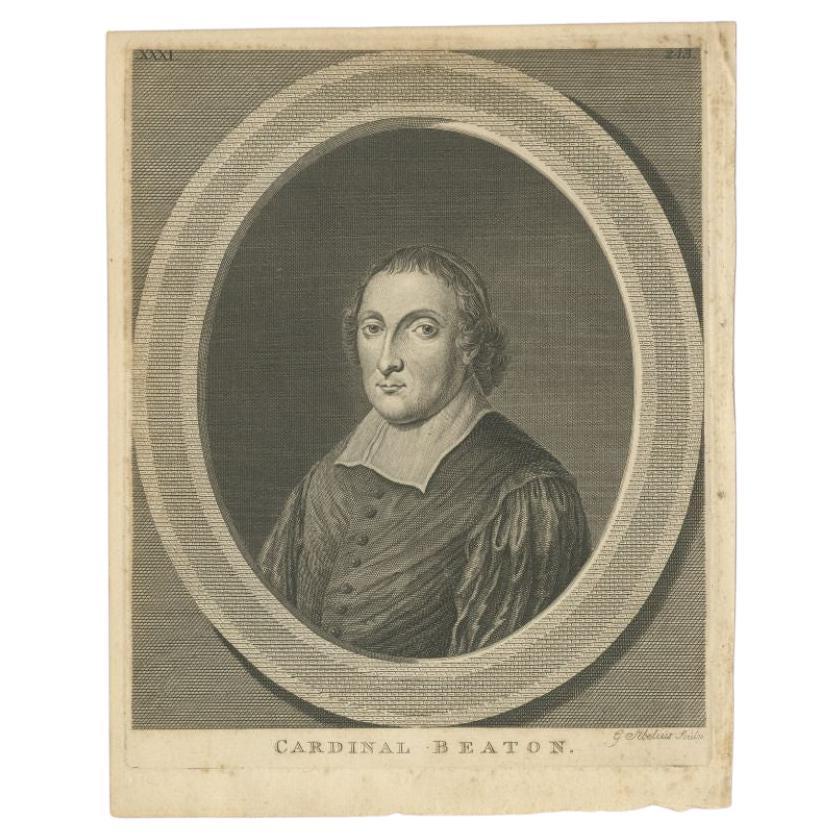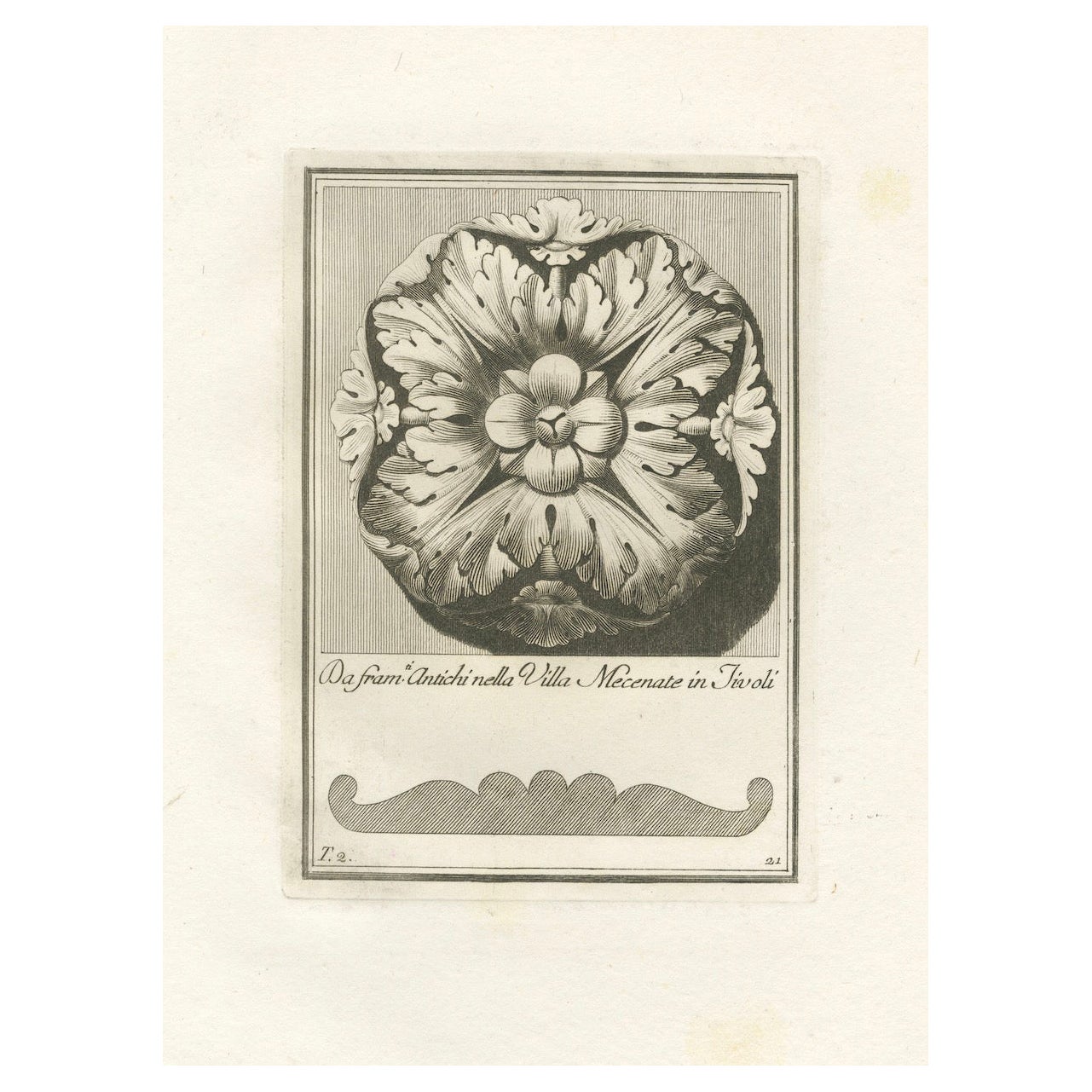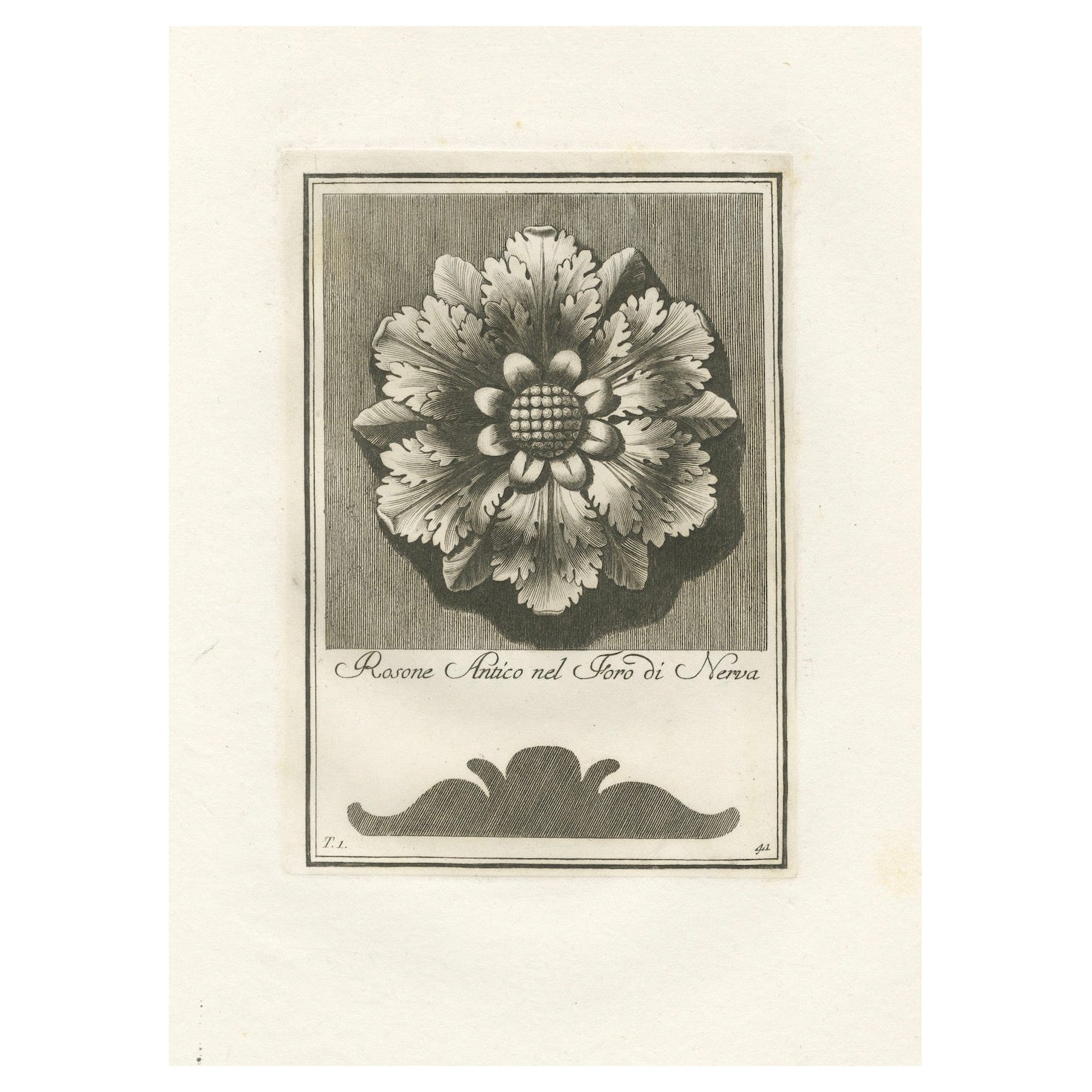Items Similar to 1780 Brutus, Large Physiognomical Study Engraved by Robert Brichel, Portrait
Want more images or videos?
Request additional images or videos from the seller
1 of 6
1780 Brutus, Large Physiognomical Study Engraved by Robert Brichel, Portrait
About the Item
Robert Brichel
Brutus [Brutus, Marcus Iunius]
Large physiognomical study from the first issue of Lavater’s Physiognomische Fragmente.
Copper engraving.
Overall dimensions: 32.4 x 27 cm
First State. Not to be confused with the later copy by Henry Füssli and engraved by Trotter.
- Dimensions:Height: 12.76 in (32.4 cm)Width: 10.63 in (27 cm)Depth: 0.04 in (1 mm)
- Materials and Techniques:Paper,Etched
- Place of Origin:
- Period:
- Date of Manufacture:1780
- Condition:Wear consistent with age and use. Overall extremely clean.
- Seller Location:Norwich, GB
- Reference Number:1stDibs: LU7031233214252
About the Seller
No Reviews Yet
Vetted Seller
These experienced sellers undergo a comprehensive evaluation by our team of in-house experts.
Established in 1992
1stDibs seller since 2022
9 sales on 1stDibs
- ShippingRetrieving quote...Ships From: Norwich, United Kingdom
- Return PolicyA return for this item may be initiated within 14 days of delivery.
More From This SellerView All
- Camelia Clowesiana [Camellia], Drawn by J J Jung, Engraved by Oudet, BerlèseBy J. J. JungLocated in Norwich, GBIssued in the much sought after and scarce series: Abbé Lorenzo Berlèse Iconographie du genre camellia ou description et figures des camellia les plus belles et les plus rares ...Category
Antique 1840s French Early Victorian Prints
MaterialsPaper
- 1673 Geese, Nicolas Robert (B.1614), Ornithology, Large Folio EtchingLocated in Norwich, GBAnser; Oye. Nicolas Robert (18 April 1614 – 25 March 1685) Issued in the scarce work: Diverses oyseaux dessignées et gravées d'apres le naturel. Paris, F. Pilly, (1673). Sheet: 36.5 x 24 cm. Later hand color. Nissen, IVB 787; Ronsil 2599; see Bradley Martin 1837. 17th century ornithological engraving...Category
Antique Late 17th Century French Prints
MaterialsPaper
- Camelia Cooperii 'Camellia', Drawn by J J Jung, Engraved by Oudet, BerlèseBy Paul OudetLocated in Norwich, GBIssued in the much sought after and scarce series: Abbé Lorenzo Berlèse Iconographie du genre camellia ou description et figures des camellia les plus belles et les plus ra...Category
Antique 1840s Early Victorian Prints
MaterialsPaper
- 1673 Merganser Ducks, Nicolas Robert Large Folio Etching in Hand ColourLocated in Norwich, GBFiber ales Bieure Nicolas Robert (18 April 1614 – 25 March 1685) Issued in the scarce work: Diverses oyseaux dessignées et gravées d'apres le naturel. Paris, F. Pilly, (1673). ...Category
Antique Late 17th Century French Prints
MaterialsPaper
- 1741 Portrait of Georg Eberhard Rumphius, Naturalist, Botanist, Large FolioLocated in Norwich, GBJacobus de Later 40 x 24.5 cm Copper engraving Printed by Francois Halma Georg Eberhard Rumphius (1627-1702) was a German botanist employed by the Dutch East India Company. He spent much of the second half of the 17th century in Ambon, first as a merchant but later given dispensation to dedicate his full attention to the study of the flora and fauna of the Spice Islands. Rumphius is presented in this portrait surrounded by his objects of study - the plants and shells on the table, and the animal...Category
Antique 1740s Dutch Prints
MaterialsPaper
- 1780 Floral Spring Bouquet, Louis Tessier, Folio, Tulip, Poeny, Hand ColouredLocated in Norwich, GBFloral Bouquet engraved after Louis Tessier for "Livre de Corbeilles et Vases de Fleurs" Engraved by Jean-Jacques Avril Spring Bouquet with Ranunculus and Tulip. Measures: 36.4 x 27.7 cm "Avril l'aine, Sculp", in text, lower right; "L. Tessier, del" lower right. The six plates for "Livre de Corbeilles et Vases de Fleurs" (A Book of Baskets and Vases of Flowers) were engraved by J.J. Avril after paintings by Louis Tessier. The plates were hand colored and the coloring varies from impression to impression. This impression is a beautiful example of Tessier's eye for design, with his elegant use of space and the vivid color combinations by Avril. Despite the formality of the still life, the fun, haphazard arrangement of these fantastic flowers makes for a charming yet highly stylized image. Jean Jaacques Avril (the elder) was born in Paris in 1744 and studied architecture but became a student of engraver Jan Georges...Category
Antique Late 18th Century French Georgian Prints
MaterialsPaper
You May Also Like
- "Elegy (Study)" by Robert MotherwellBy Robert MotherwellLocated in Stamford, CTA lithograph titled, "Elegy ( Study )" by Robert Motherwell 1979, signed and numbered 42/98 in pencil with Motherwell's blind stamp. There were 12 artist proofs in addition to the 98...Category
Mid-20th Century American Mid-Century Modern Contemporary Art
MaterialsPaper
- Copper Engraved Portrait of Jesus Christ by Robert Brichet, around 1800Located in Langweer, NLTitle on the engraving: "Un Christ d'un original très ancien, que la fable donne pour après nature" Translated: "A Christ of a very old original, which the fable gives for nature" ...Category
Antique Late 18th Century Prints
MaterialsPaper
- Curly Gaze: The Expressive Study by Pigné Engraved, 1740Located in Langweer, NLThis engraving showcases two striking male profiles, each rendered with remarkable detail, characteristic of the "Recueil de XC Têtes tirées des Sept Cartons des Actes des Apôtres." ...Category
Antique 1740s Prints
MaterialsPaper
- Antique Portrait of Cardinal Beaton by Sibelius, c.1780Located in Langweer, NLAntique print titled 'Cardinal Beaton'. Portrait of Cardinal Beaton. Source unknown, to be determined. Artists and Engravers: Engraved by G. Sibelius. Condition: General age-r...Category
Antique 18th Century Prints
MaterialsPaper
- Villa d'Este Tivoli Rosette, Plate 21 Engraved in 1780Located in Langweer, NLTitle: "Villa d'Este Tivoli Rosette, Plate 21" Description: This 18th-century engraving, titled "Da frammenti Antichi nella Villa d'Este in Tivoli," portrays...Category
Antique 1780s Prints
MaterialsPaper
- Echoes of Elegance: The Engraved Legacy of Carlo Antonini, 1780Located in Langweer, NLA fine example of an 18th-century botanical engraving. Created by Carlo Antonini between 1777 and 1790, it showcases a detailed depiction of a flower in full bloom. The illustration is highly detailed, with individual petals, stamens, and shading rendered with precision, indicating a high level of craftsmanship and attention to detail that was characteristic of botanical illustrations of the period. The image is likely part of a larger work, perhaps a botanical compendium or study, which would have been used for both scientific study and artistic appreciation. The text at the bottom of the print, "Rarone Antico nel Foro di Nerva," analysed: The phrase "Rosone Antico nel Foro di Nerva" could potentially be translated as "Ancient Rosette in the Forum of Nerva." Breaking down the phrase: - "Rosone" typically refers to a "rose window," a large circular window with mullions and tracery radiating in a form suggestive of a rose, commonly found in Gothic architecture. However, in this context, without the surrounding content, it might refer to a specific design or feature that is described as "antique" or ancient. - "Antico" means "ancient" or "antique," indicating that the item or feature referred to as "Rosone" is of historical significance or from a past era. - "Foro di Nerva" refers to the Forum of Nerva, which is one of the Imperial Forums in Rome. Therefore, the phrase seems to describe an ancient or historically significant rosette (or possibly a design or feature similar to a rose window) located in the Forum of Nerva. This might be referencing a specific architectural detail or decorative element that was part of the forum's structure or adornment. For a detailed analysis or historical context, you would typically need to consult historical texts, architectural studies, or archaeological reports related to the Forum of Nerva. The style of the print suggests that it was created using engraving techniques that involve incising a design onto a hard surface (like a copper plate), which was then inked and used to produce the image on paper. This method allowed for reproductions of the design and was commonly used for scientific illustrations because it could capture intricate details with great accuracy. Such prints would have been important in the 18th century for the dissemination of botanical knowledge, contributing to the fields of botany, horticulture, and medicine. They also reflect the Enlightenment's value on reason and empirical evidence, where plants were not only appreciated for their beauty but also studied for their structure and utility. Carlo Antonini's notable work includes a series of 85 etchings that were published in Rome in 1780, dedicated to Count Stanislao Potocki. This collection, titled "Serie di LXXXV disegni in varie grandezze composti dal celebre pittore Salvator Rosa publicati ed incisi da Carlo Antonini," consists of reproductions of Salvator Rosa's 'Figurine' series and other prints. It includes various pieces like a title-page with a coat of arms, a dedication, a preface, and several other individual works ranging from small prints to larger ones, such as depictions of mythical and historical scenes. The etchings were printed in sanguine ink, indicative of the period's artistic preferences for printmaking. These works are an example of Antonini's precision in reproducing another artist's work and are recognized for their faithfulness to Rosa's original designs. Additionally, Antonini is associated with other works such as the "Manuale di varj ornamenti componenti la serie de' vasi antichi," a collection that includes designs and engravings of ancient vases, and prints dedicated to the Duomo Di Orvieto. Another significant piece is his engraving titled "Prospetto degli Orti Farnesiani sul Monte Palatino," which was created in collaboration with Francesco Panini...Category
Antique 1780s Prints
MaterialsPaper
Recently Viewed
View AllMore Ways To Browse
Tall Chest Of Drawers Antique
Tall Chest Of Drawers Antique Furniture
Antique Tall Chest Of Drawers
Georgian Cross
Tall Antique Chest Of Drawers
Desk And Chair Set Midcentury
1st Herman
Coromandel Wood
Pair Commode S
Marble Display Case
Pair Of White Chests
Chinese Red Lacquer Cabinet
Dress With Shells
Antique Cabinet Turned Legs
Corbusier Poster
Chinese Red Lacquered Cabinet
Greek Antique Chair
Greek 70s
